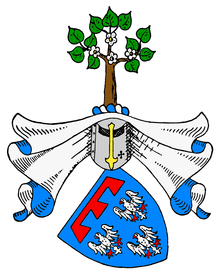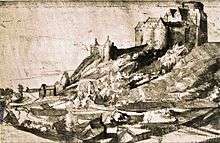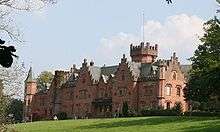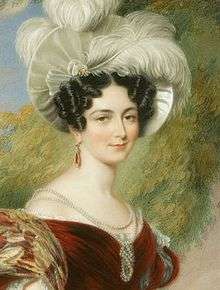Prince of Leiningen

The title of Prince of Leiningen (German: Fürst zu Leiningen) was created by the Holy Roman Emperor Joseph II, who elevated Carl Friedrich Wilhelm, Count of Leiningen-Dagsburg-Hardenburg (a younger branch of the House of Leiningen) to the rank of Reichsfürst (Prince of the Holy Roman Empire) on 3 July 1779.
Principality of Leiningen at Amorbach
From 1560 until 1725 Hardenburg Castle was the main seat of the branch. After its partial destruction during the Nine Years' War the residence was moved to Bad Durkheim.
In 1801, this line was deprived of its lands on the left bank of the Rhine, namely Hardenburg, Dagsburg and Durkheim, by France, but in 1803 it received the secularized Amorbach Abbey as an ample compensation for these losses. The complete titles of Carl Friedrich Wilhelm, 1st Prince of Leiningen were Imperial Prince of Leiningen, Count palatine of Mosbach, Count of Düren, Lord of Miltenberg, Amorbach, Bischofsheim, Boxberg, Schüpf and Lauda.
A few years later, the short-lived Principality of Leiningen at Amorbach was mediatized, and its territory is now included mainly in Baden, but partly in Bavaria and in Hesse. Amorbach Abbey is still today the seat of the Prince of Leiningen. The former hunting lodge Waldleiningen Castle at Mudau is now run as a hospital by the family.
 Dagsburg Castle (1663)
Dagsburg Castle (1663) Hardenburg Castle (1580)
Hardenburg Castle (1580) Durkheim Castle (1787)
Durkheim Castle (1787)
 Waldleiningen Castle
Waldleiningen Castle
Titles
The family is extant, and all male-line descendants of the grantee bear the title of Prince(ss) of Leiningen (Prinz(essin) zu Leiningen) with the style of Serene Highness. The head of the house is styled The Prince of Leiningen (Fürst zu Leiningen: see the article Fürst for the difference between it and the other princely title, Prinz).
Family connections and events

The second prince, Emich Charles, married Princess Victoria of Saxe-Coburg-Saalfeld. After his death in 1814, the princess married Prince Edward, Duke of Kent and Strathearn, a younger son of George III of the United Kingdom, by whom she became the mother of Queen Victoria. The Queen's half-siblings, Carl, 3rd Prince of Leiningen and Princess Feodora remained close to their half-sister.
The fourth prince, Ernst, pursued a career in the British Royal Navy; his marriage to Princess Marie of Baden, a descendant of the Electress Sophia of Hanover, meant that their children were in the line of succession to the British throne, though rather far down the list.
The sixth prince, Karl, married Grand Duchess Maria Kirillovna of Russia, daughter of Princess Victoria Melita who was in turn daughter of Alfred, Duke of Saxe-Coburg and Gotha, Queen Victoria's second son. As a result, their descendants today occupy places higher up the British line of succession, in the early hundreds.
In 1991, the seventh prince, Emich, disinherited his eldest son, the Hereditary Prince Karl Emich, after he married his second wife, Dr Gabriele Thyssen, on May 24 of that same year. The disinheritance was upheld by the German courts, and so on Emich's death later that year, he was succeeded by his second son, Andreas, who has been the eighth prince from that time. He married Princess Alexandra of Hanover.
Princes of Leiningen (from 1779)

- Carl Friedrich Wilhelm, 1st Prince of Leiningen (1724–1807)
- Emich Carl, 2nd Prince of Leiningen (1763–1814)
- Carl, 3rd Prince of Leiningen (1804–1856)
- Ernst, 4th Prince of Leiningen (1830–1904)
- Emich, 5th Prince of Leiningen (1866–1939)
- Karl, 6th Prince of Leiningen (1898–1946)
- Emich, 7th Prince of Leiningen (1926–1991)
- Andreas, 8th Prince of Leiningen (born 1955)
- his heir-apparent, Ferdinand, Hereditary Prince of Leiningen (born 1982)
See also
Sources
- https://archive.is/20120722083831/http://www.btinternet.com/~allan_raymond/Leiningen_Royal_Family.htm
- Marek, Miroslav. "leiningen/leiningen6.html". Genealogy.EU.